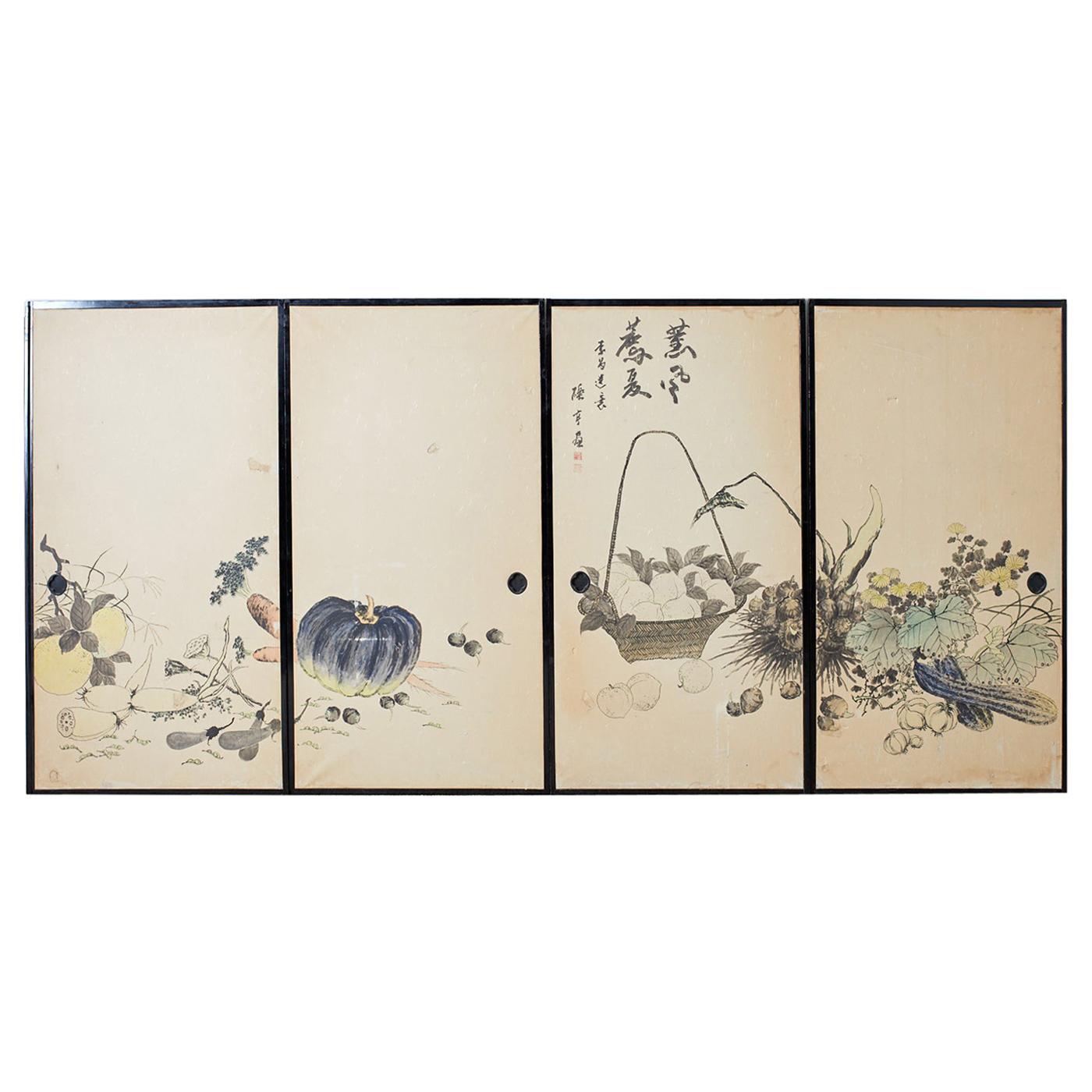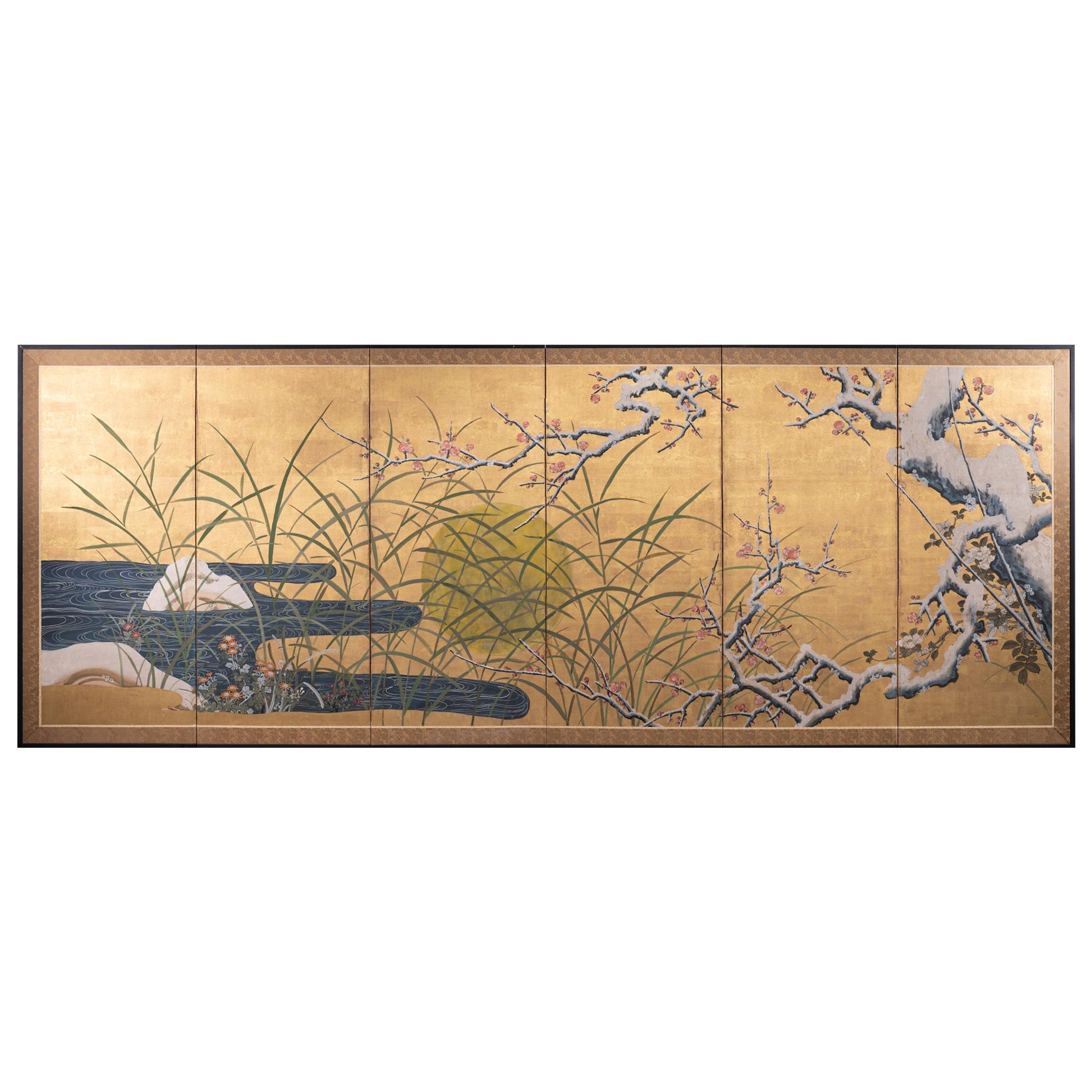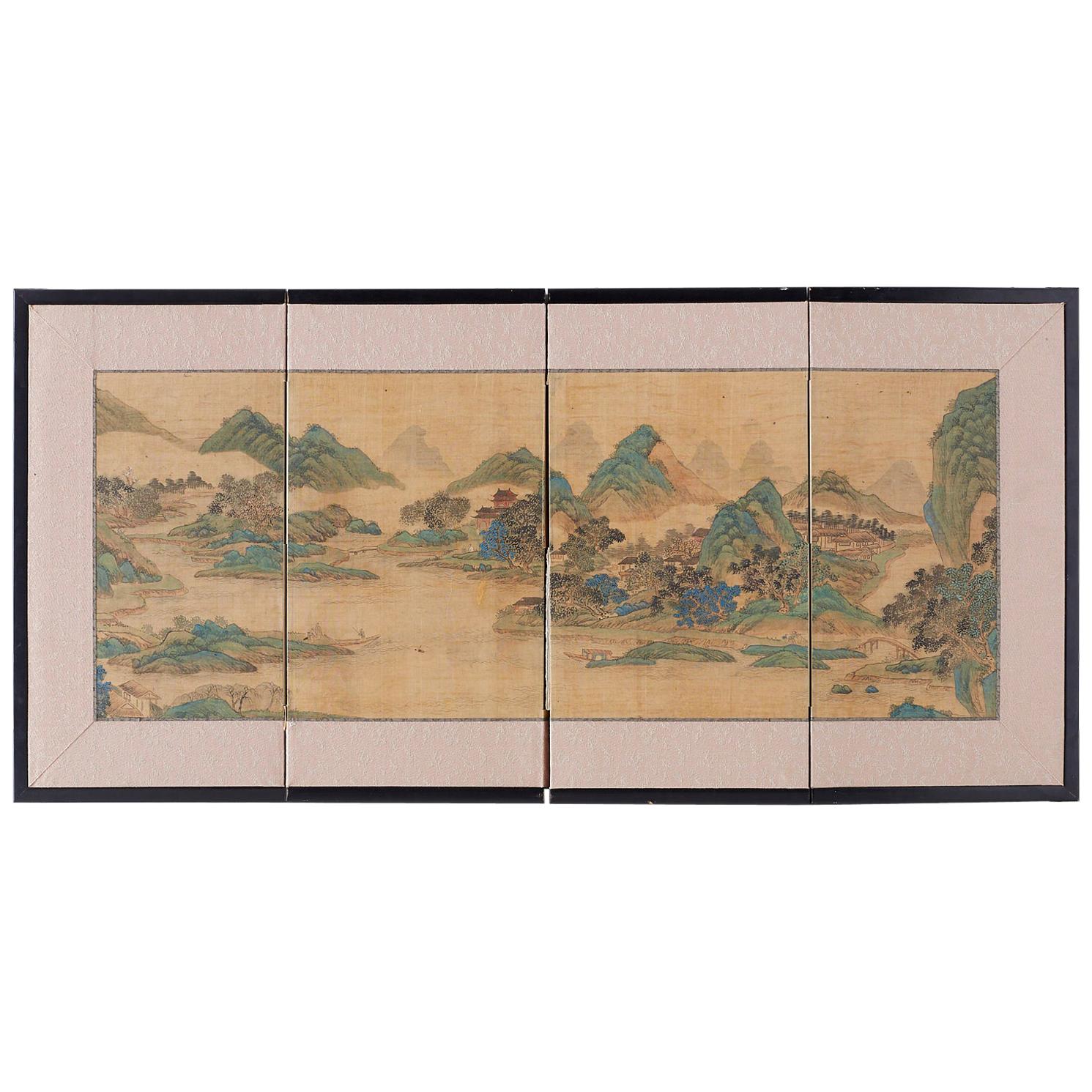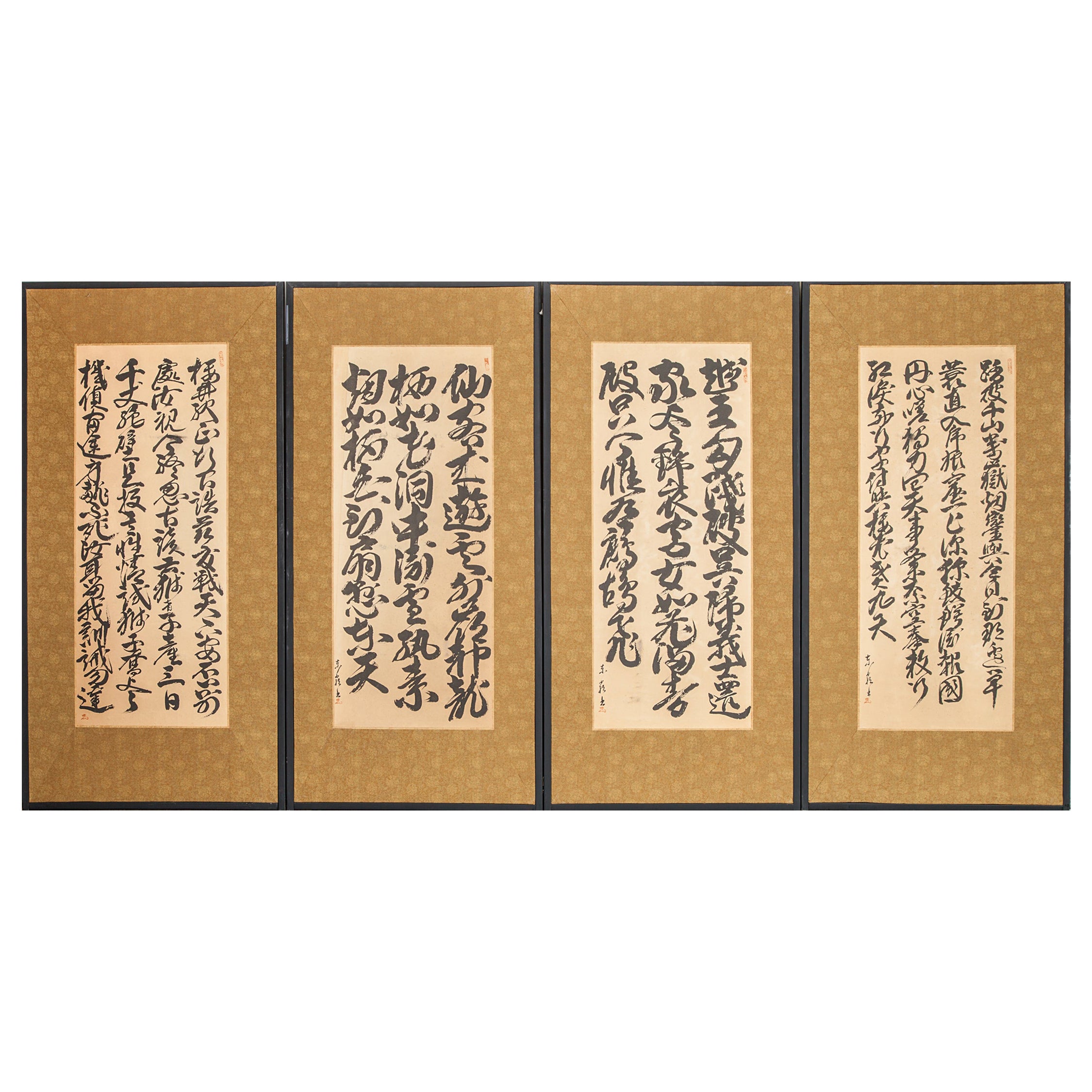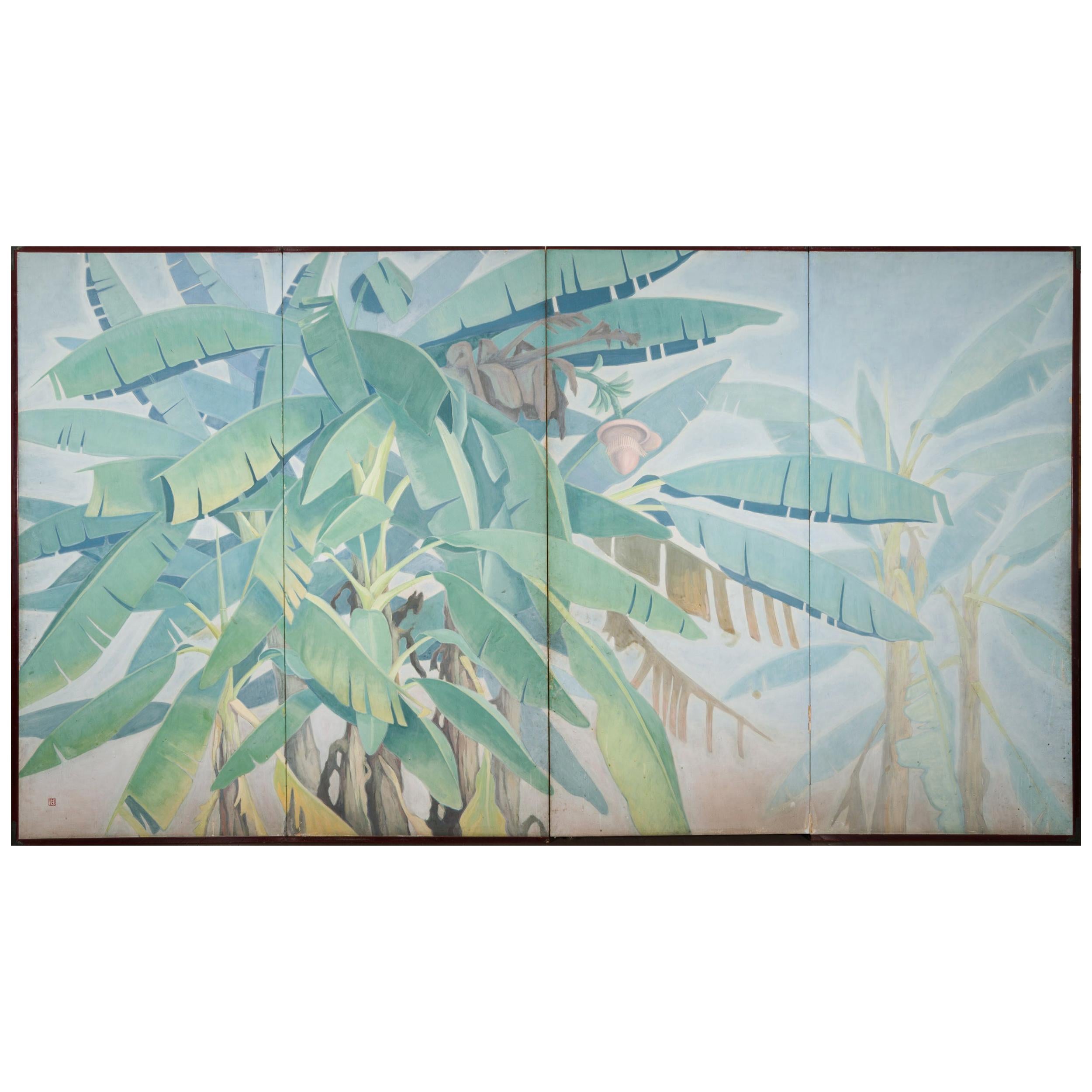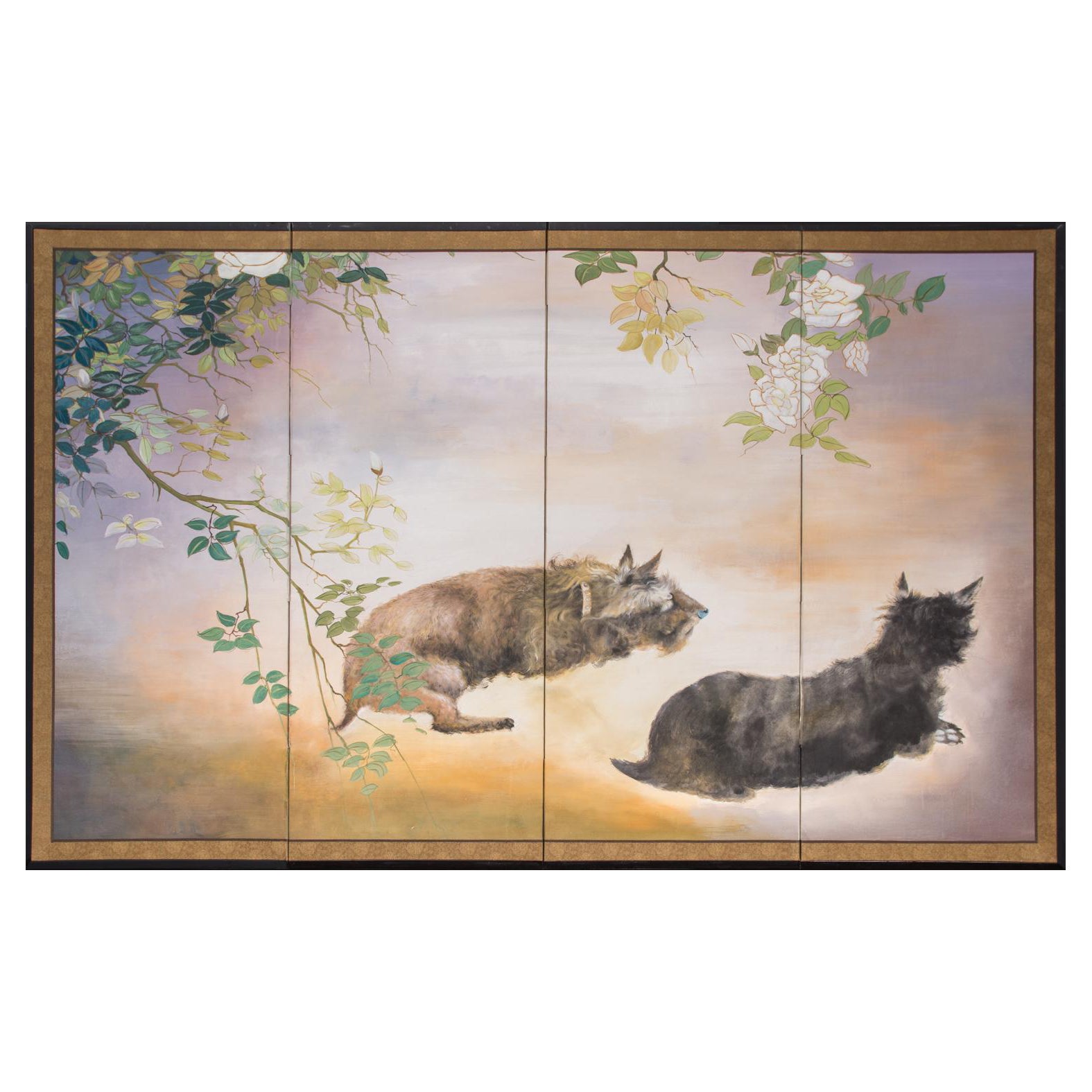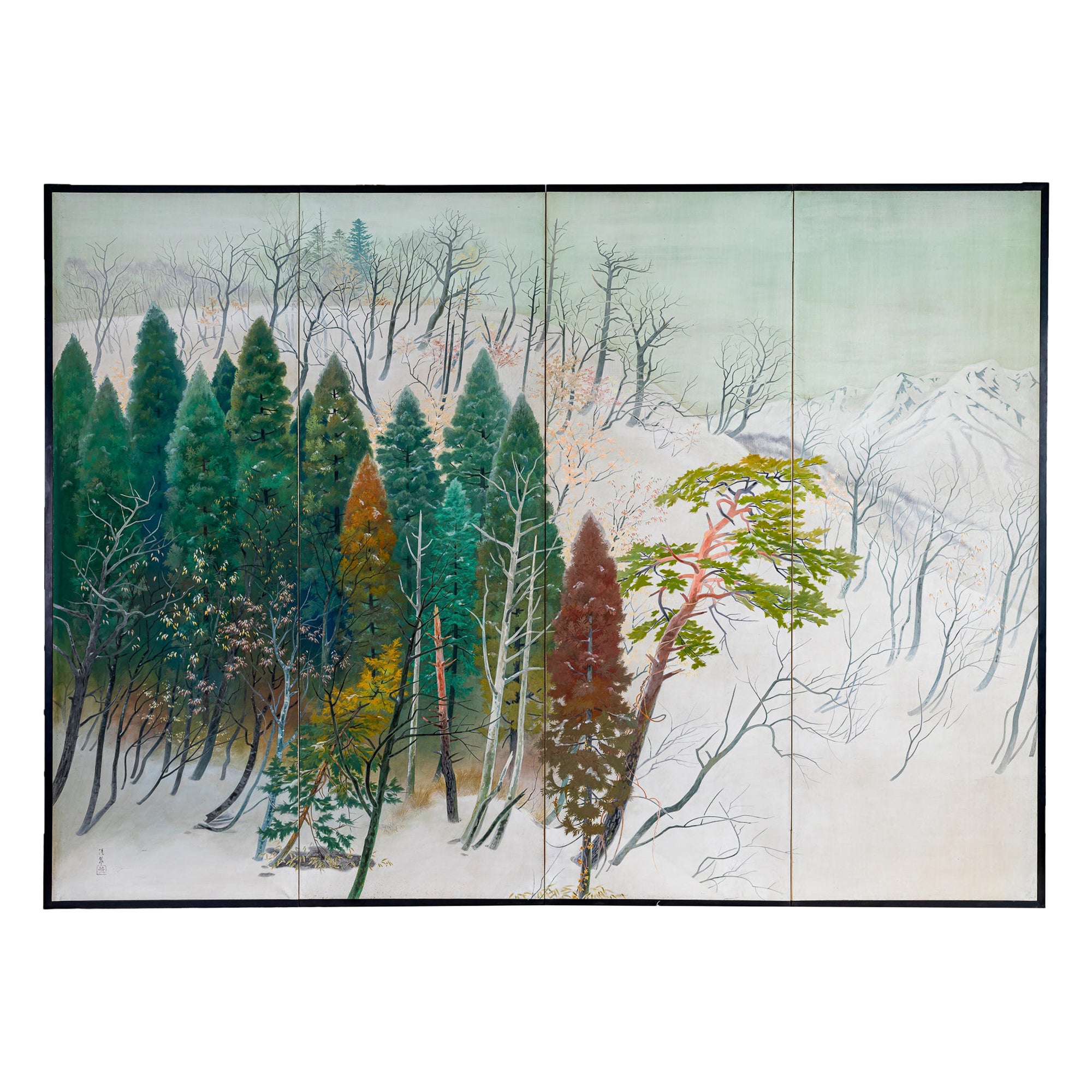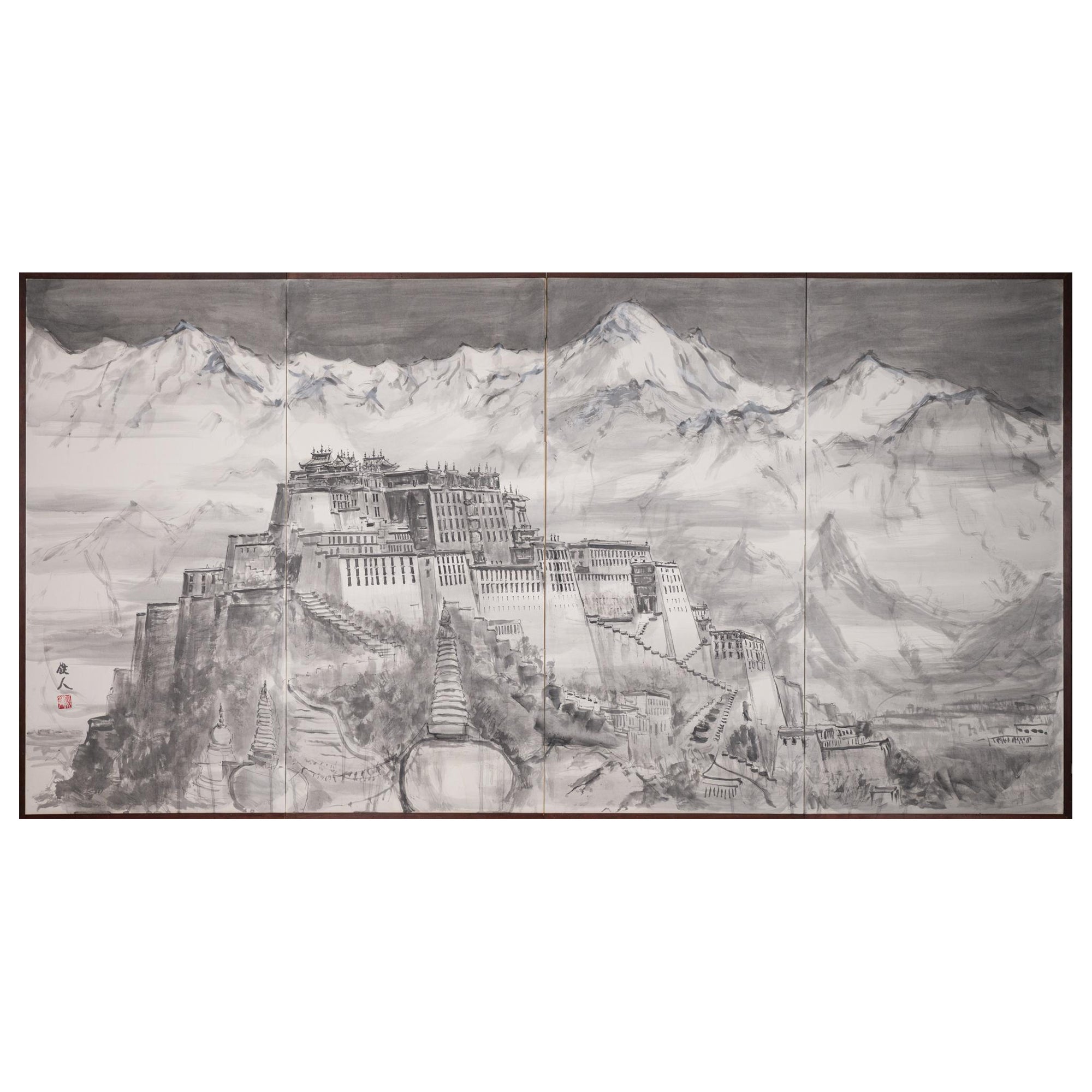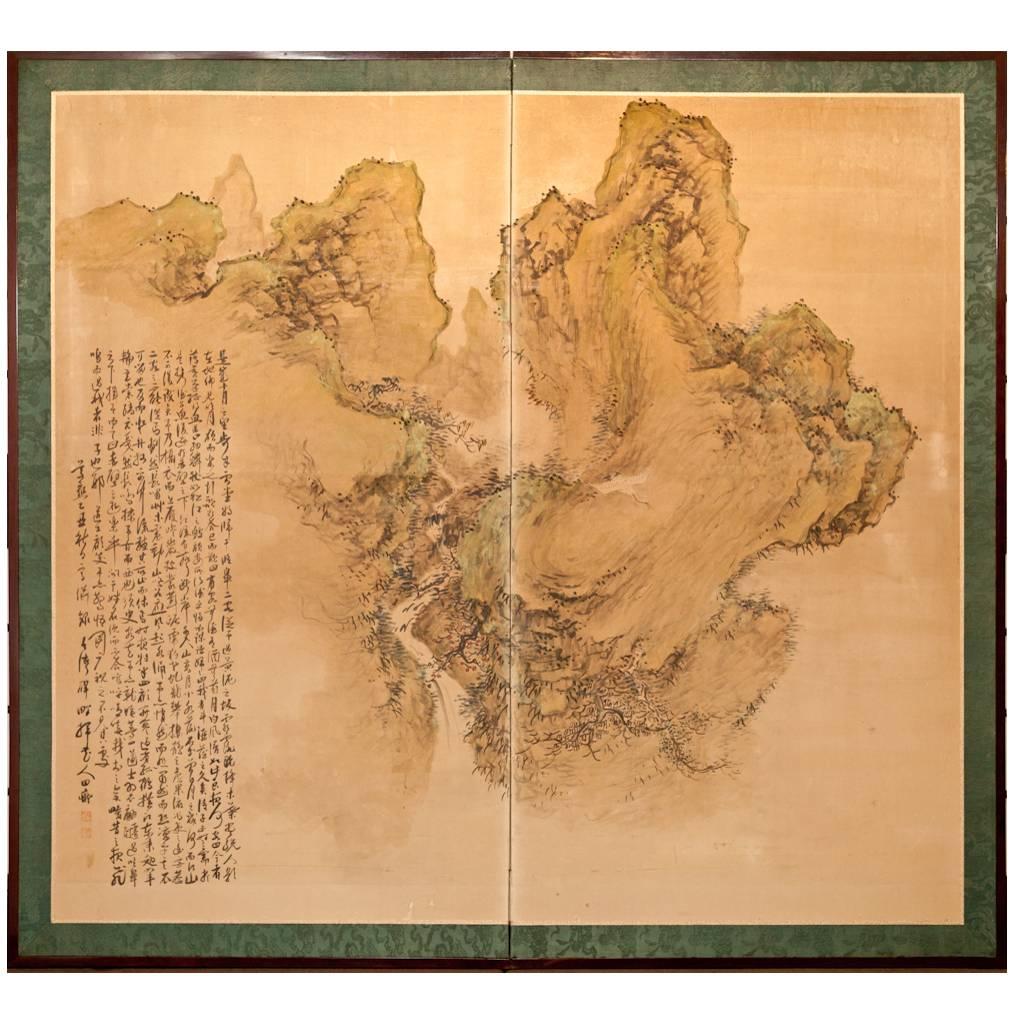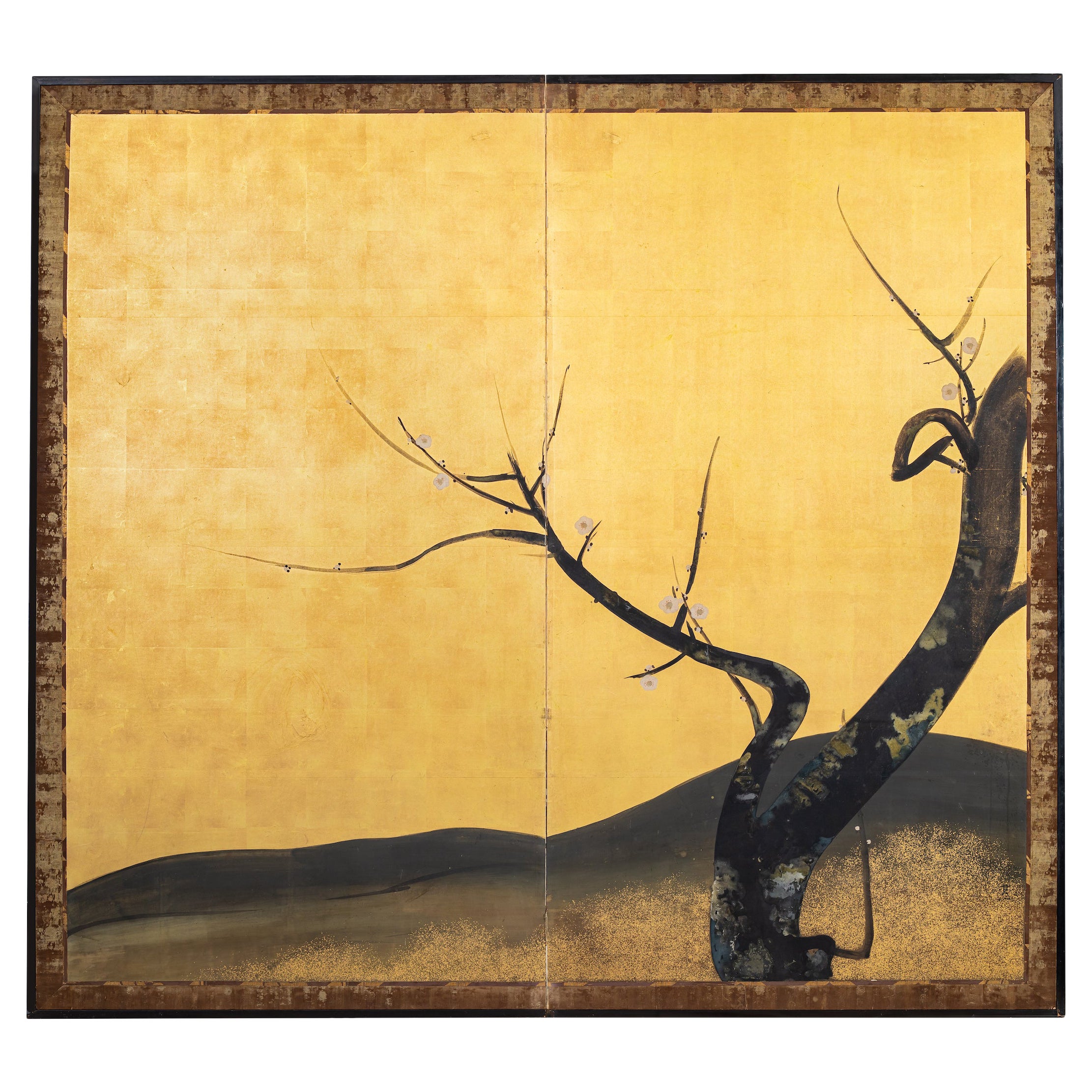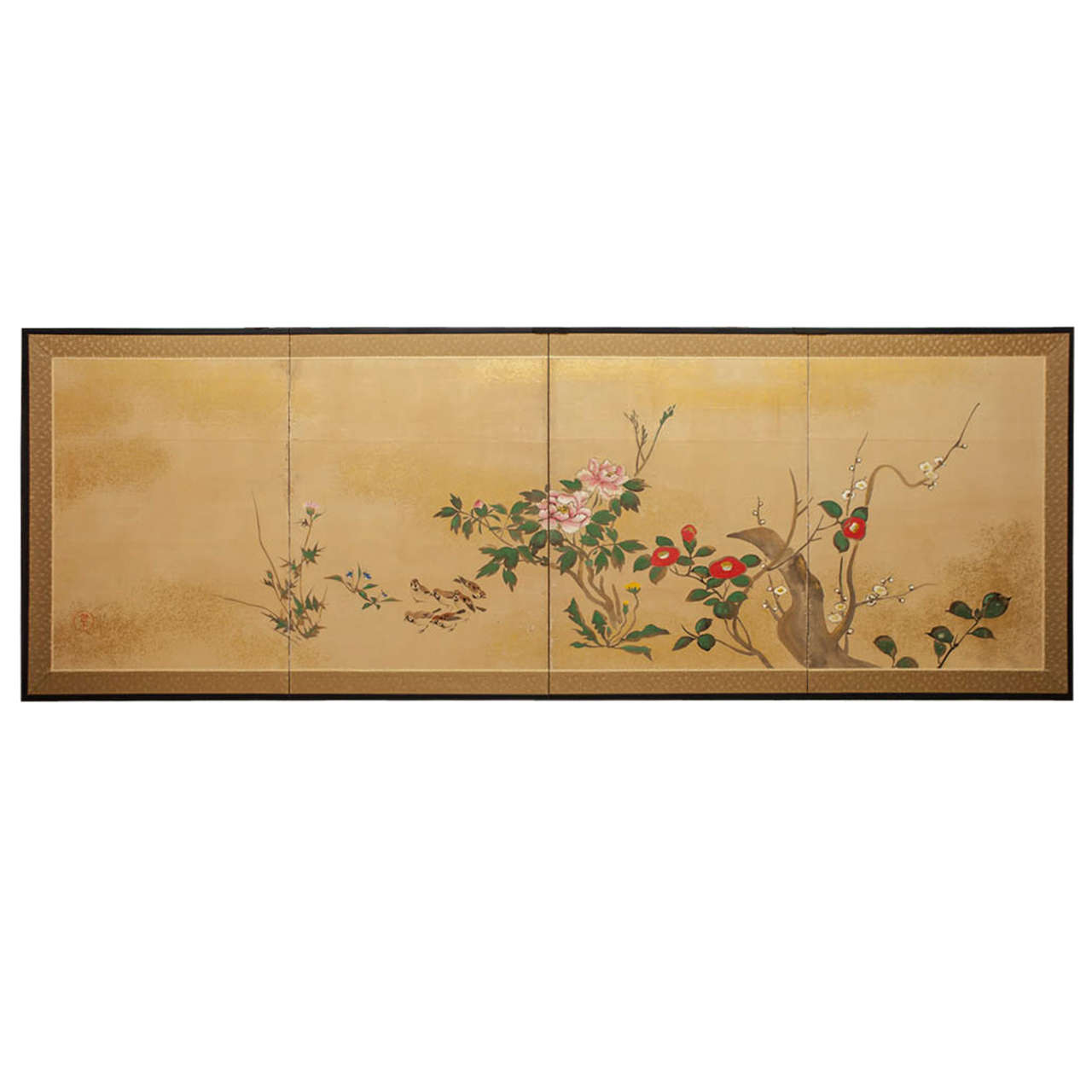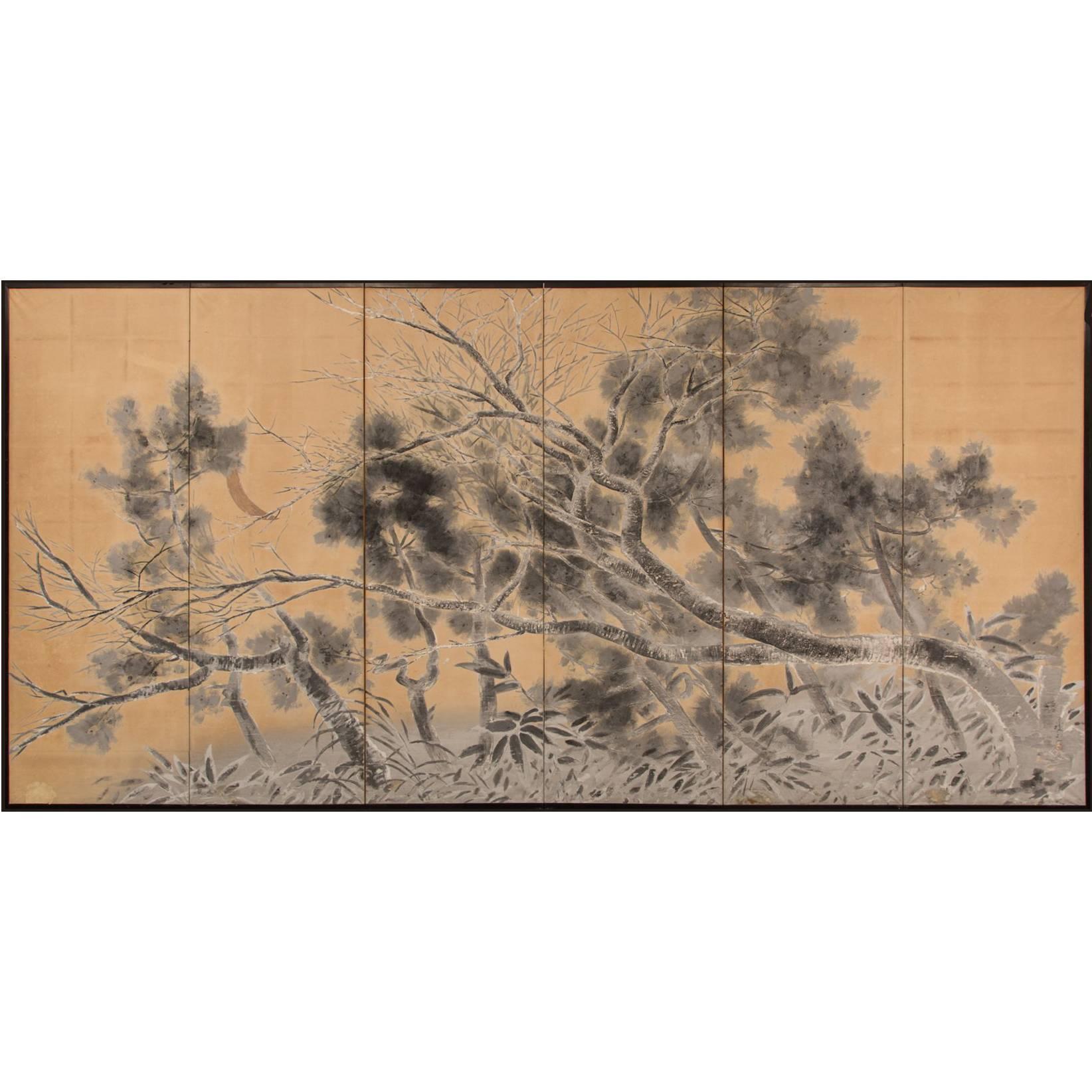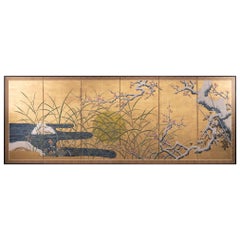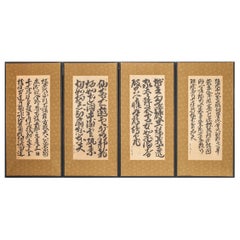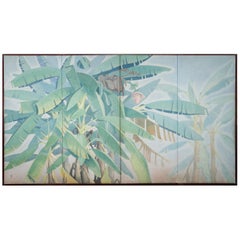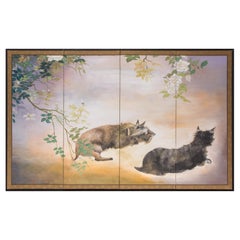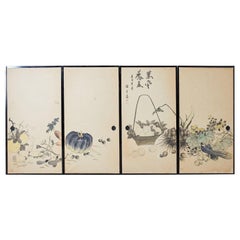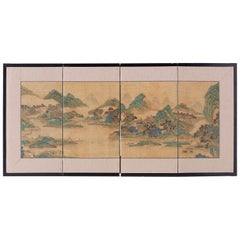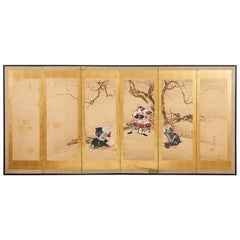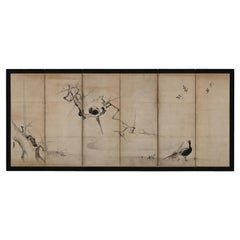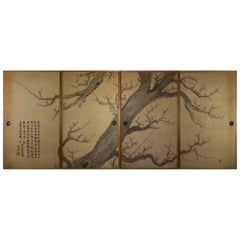
Japanese Four-Panel Screen Four Fusuma 'Sliding Doors' with Venerable Plum
View Similar Items
Want more images or videos?
Request additional images or videos from the seller
1 of 21
Japanese Four-Panel Screen Four Fusuma 'Sliding Doors' with Venerable Plum
$65,000List Priceper set
About the Item
- Dimensions:Height: 69.5 in (176.53 cm)Width: 164 in (416.56 cm)Depth: 1 in (2.54 cm)
- Sold As:Set of 4
- Style:Edo (Of the Period)
- Materials and Techniques:
- Place of Origin:
- Period:
- Date of Manufacture:circa 1800
- Condition:Most items that are 100 years old have been cleaned or polished in their lifetime. More involved restorations are mentioned in the above description. For a detailed condition report and a video of this item please contact us directly. -Naga Antiques.
- Seller Location:Hudson, NY
- Reference Number:Seller: S17301stDibs: LU855120134102
About the Seller
5.0
Recognized Seller
These prestigious sellers are industry leaders and represent the highest echelon for item quality and design.
Established in 1971
1stDibs seller since 2008
166 sales on 1stDibs
Typical response time: 8 hours
Associations
The Art and Antique Dealers League of AmericaAntiques Associations Members
Authenticity Guarantee
In the unlikely event there’s an issue with an item’s authenticity, contact us within 1 year for a full refund. DetailsMoney-Back Guarantee
If your item is not as described, is damaged in transit, or does not arrive, contact us within 7 days for a full refund. Details24-Hour Cancellation
You have a 24-hour grace period in which to reconsider your purchase, with no questions asked.Vetted Professional Sellers
Our world-class sellers must adhere to strict standards for service and quality, maintaining the integrity of our listings.Price-Match Guarantee
If you find that a seller listed the same item for a lower price elsewhere, we’ll match it.Trusted Global Delivery
Our best-in-class carrier network provides specialized shipping options worldwide, including custom delivery.More From This Seller
View AllJapanese Six-Panel Screen, Winter Landscape with Flowering Plum
Located in Hudson, NY
Japanese six-panel screen: Winter landscape with flowering plum, Meiji period (1868-1912) painting of a full moon with wild grasses between river's edge and a snow covered plum tree ...
Category
Early 20th Century Japanese Meiji Paintings and Screens
Materials
Gold Leaf
Japanese Four Panel Screen: Seasonal Poems
Located in Hudson, NY
Four individual mounted panels of calligraphy. Each panel contains a poem inspired by one of the four seasons. Each panel signed: To Rei. Ink on mulberry paper with silk brocade border.
Category
Antique Mid-19th Century Japanese Paintings and Screens
Materials
Brocade, Silk, Paper
Japanese Four Panel Screen Banana Grove
Located in Hudson, NY
Japanese Four Panel Screen: Banana Grove, early Showa period (late 1920s-1930s) painting of life-size fruiting banana trees in a style that ...
Category
Mid-20th Century Japanese Showa Paintings and Screens
Materials
Wood, Paper
Japanese Four Panel Screen: Scotties Under Roses
Located in Hudson, NY
Modern painting in mineral pigments on mulberry paper with a silk brocade border.
Category
20th Century Japanese Paintings and Screens
Materials
Brocade, Silk, Paper
Japanese Four Panel Screen, Snowy Mountain Landscape
Located in Hudson, NY
Hinoki (Japanese red pine) and other deciduous trees in mineral pigments on mulberry paper. Signature reads: Yosui.
Category
Early 20th Century Japanese Paintings and Screens
Materials
Paper
Japanese Four Panel Screen Tibetan Mountain Monastery
Located in Hudson, NY
Powerful depiction of sprawling monastery with massive mountains in the background. Ink on paper. Signature and seal read: Tetsuzan.
Category
Antique Early 19th Century Japanese Paintings and Screens
Materials
Paper
You May Also Like
Set of Four Japanese Fusuma Painted Door Panels
Located in Rio Vista, CA
Rare set of four Japanese Showa period door panels known as Fusuma in Japanese architecture. Similar to a Shoji room divider but made of an opaque materia...
Category
20th Century Japanese Showa Paintings and Screens
Materials
Brass
$2,400 Sale Price / set
20% Off
Japanese Miniature Four-Panel Screen Blue and Green Landscape
Located in Rio Vista, CA
19th century mid-Edo period Japanese four-panel miniature screen. Depicting a beautifully painted Chinese blue and green landscape in the Nanga School...
Category
Antique 19th Century Japanese Edo Paintings and Screens
Materials
Brass
Japanese Edo Six Panel Screen Yoshitsune and Benkei
Located in Rio Vista, CA
Spectacular 19th century Japanese late Edo period six-panel byobu screen depicting Yoshitsune and Benkei, two heroes of Japanese folklore. Crafted in ink and natural color pigments on mulberry paper with thick gold leaf borders on each panel. The character Yoshitsune is seated under a blossoming cherry tree in full armor holding a fan. The warrior priest or monk Benkei is depicted kneeling on a leopard skin...
Category
Antique 19th Century Japanese Edo Paintings and Screens
Materials
Brass, Gold Leaf
$3,400 Sale Price
29% Off
17th Century Japanese Screen. Ink Plum Tree & Birds by Kano Naonobu.
Located in Kyoto, JP
Kano Naonobu (1607-1650)
Plum Tree and Birds
Six-fold Japanese Screen. Ink and slight color on paper.
In this evocative ink work spread over a six-panel folding screen, we see the consummation of the elegance and refinement of the Edo Kano school. This 17th century screen is a rare surviving example of a large-scale bird and flower painting by Kano Naonobu, the younger brother of Kano Tanyu...
Category
Antique 17th Century Japanese Edo Paintings and Screens
Materials
Wood, Paper
Japanese Six Panel Screen with Hotei, Edo Period, Early 19th Century
Located in Austin, TX
A delightful Japanese six panel painted paper screen featuring the beloved figure Hotei, Edo Period, early 19th century.
Hotei, called Budai in China, and known as the Laughing Buddha or Fat Buddha in the West, is considered to be an emanation of Maitreya, the Buddha of the Future.
In Japan, he also holds a special place as one of the Seven Lucky Gods, being the god of fortune, and protector of children.
He is always portrayed as a mirthful and corpulent man, dressed in loose robes that show off his round belly. He carries a sack with him, said to be filled with treasure. As the protector of children, he is often portrayed with them playing on or around him, as he is here. The children portrayed in this screen are dressed in Chinese style clothing...
Category
Antique Early 19th Century Japanese Edo Paintings and Screens
Materials
Silk, Paper
Japanese Six-Panel Screen Byobu With Chrysanthemums And Autumn Grass and Flower
Located in Torino, IT
The 19th Century Six-Panel Japanese folding screen "Byōbu" usually used in the most important Japanese house to stop wind and also to separate different space of the same big room de...
Category
Antique Mid-19th Century Japanese Edo Paintings and Screens
Materials
Gold Leaf
Recently Viewed
View AllMore Ways To Browse
2 Panel Asian Screens
Japanese Screens And Doors
Antique Window Screens
Japanese Calligraphy Screen
Japanese Screen Snow
Japanese Four Panel Silk Screen
Asian Window Screens
Used Wooden Screen Doors
Antique 2 Panel Japanese Screens
Fusuma Doors
Japanese Fusuma
Fusuma Panels
Fusuma Sliding Doors
Japanese Screen Black
Hanging Screen
Antique Brocade
Chinese Wood Screen
Asian Silk Screens And Paintings
